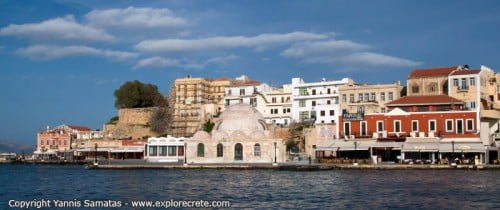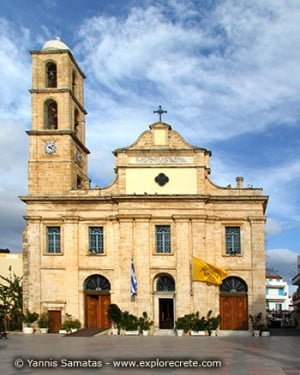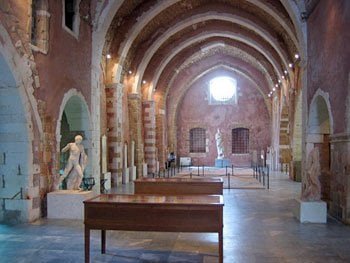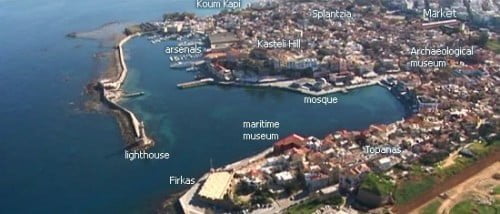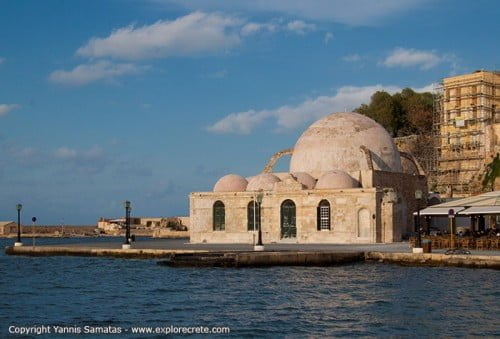Chania Municipal Market
Chania Market is located in the centre of Chania, in the heart of the city, where the main bastion of the fortifications stood in Venetian times.
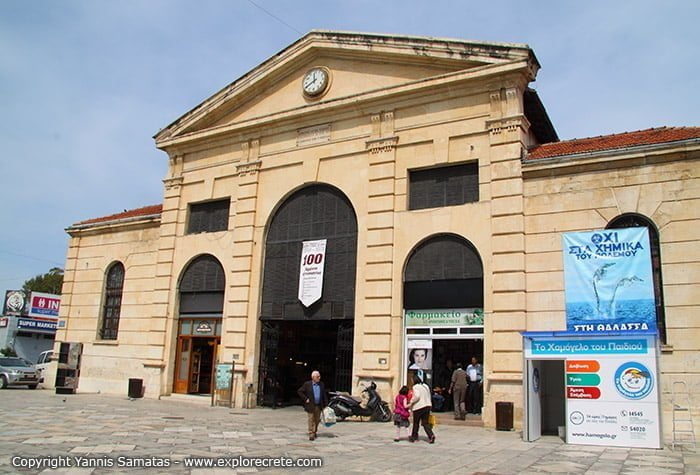
Up to the late 19th century this was the edge of town. There were rough butchers’, fishmongers’ and grocers’ shops, inns, etc. In modern terms, this was the farmers’ street market, where villagers brought their goods for sale.The city market was not a pretty sight, so in 1908 the Municipality of Chania decided to improve the area by building a covered municipal market. Building work began in 1911, according to the plans of local engineer Drandakis, modelled on the covered market of Marseille.
The Municipal Market was built on the site of the Venetian platform bastion. Of course a large section of the Venetian walls had to be demolished in order to modernise and develop the city. Measures for the protection of the Byzantine and Venetian fortifications were not implemented until much later, in the 1960s.
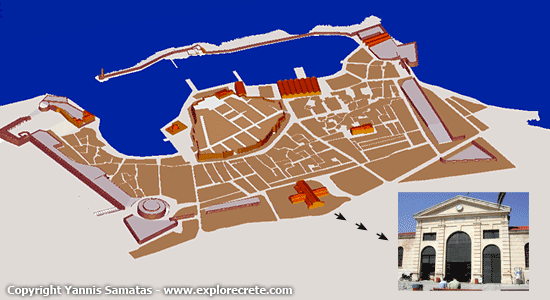
The Municipal Market was opened by Eleftherios Venizelos in 1913. It is in the shape of a cross and has four doors, one to each arm, which are shut to secure the shops housed here. The market has 76 shops, including butchers’ shops, fishmongers’, general stores, a chemist’s, etc. It is an architectural jewel of Chania and one of the most impressive covered markets in the Balkans.
Exactly opposite the Municipal Market is the Kydon Hotel. Until the last century, this was the site of the famous London Bar, where the sailors of the Great Powers came during the time of the Cretan State to amuse themselves with European artistes. Those who have read Kazantzakis’ Zorba the Greek will recognise the name of Madame Hortense. In her youth, this famous artiste was the first to put on a spectacular striptease show right here, at the turn of the 20th century.
© explorecrete.com All Rights Reserved. Reproduction or copying without permission is prohibited.

